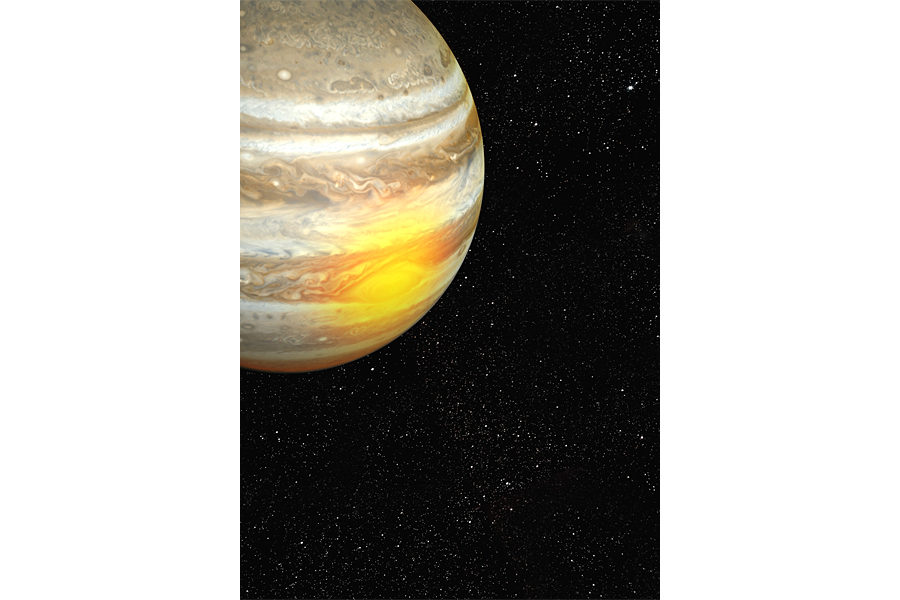Why is Jupiter so darn hot? The roiling Great Red Spot may solve the mystery
Loading...
Jupiter is hot, hot, hot – but it shouldn't be. And scientists now think they have caught a culprit red-handed.
The gas giant is over five times farther from the Sun than Earth, but temperatures in the planet's upper atmosphere average about the same as those in our own upper atmosphere. So what is heating up Jupiter?
The mysterious, roiling storm dubbed the Great Red Spot might be spewing heat, according to a study published Wednesday in the journal Nature. About 500 miles above the humongous swirling storm, temperatures top 2,400 degrees Fahrenheit.
It's "the hottest temperature we’ve seen anywhere on the planet, in the upper atmosphere," study author James O'Donoghue of Boston University told National Geographic.
If the massive storm (which is about as wide as two or three Earths put together) is the mysterious heat source, then Dr. O'Donoghue and his team may have resolved a longstanding "energy crisis."
The Sun's warmth by itself could only heat the upper atmosphere of Jupiter to about 80 degrees Fahrenheit. But it averages between 800 and 1,340 degrees.
Scientists know that Jupiter's brilliant auroras can heat up the planet's poles, but those suspects alone can't explain the elevated temperatures throughout the atmosphere.
"No one has quite worked out how you distribute that energy from the polar regions down to the equator," Steve Miller, a professor of planetary science and science communication at University College London in England who was not involved in the research, told The New York Times. "There’s a lot of energy there. Distributing it has been a problem."
So O'Donoghue and his colleagues decided to peer at the temperatures using the SpeX spectrometer at NASA’s Infrared Telescope Facility (IRTF) in Hawaii to see if they could find another likely suspect. And that's when they noticed just how much heat surrounded the Great Red Spot.
"We could see almost immediately that our maximum temperatures at high altitudes were above the Great Red Spot far below – a weird coincidence or a major clue?" O'Donoghue asked in a NASA press release.
The team would say a major clue.
Two types of energy waves generated by the turbulent storm might be heating the upper atmosphere, according to a model proposed by O'Donoghue and his colleagues.
The churning and collision of atmospheric gravity waves (which are not the same as gravitational waves) and acoustic waves generated by the violently swirling mass that is the Great Red Spot could be raising the temperature.
"It's kind of like waves crashing on a beach," O'Donoghue told NPR. "Because temperature is only the movement of molecules and ions with each other, bouncing around, the only thing you really need to do is make them move around quicker and collide more with each other."
The sound waves might be doing more to make the atmosphere above the spot so hot, he tells Space.com, as "gravity waves tend to ship their energy across the planet, rather than vertically up like acoustic waves."
"The extremely high temperatures observed above the storm appear to be the 'smoking gun' of this energy transfer," O'Donoghue said in the press release. "This tells us that planet-wide heating is a plausible explanation for the 'energy crisis'."
Scientists will be able to take a closer look at the Great Red Spot to see if it truly is the heating culprit during NASA's Juno mission. The Juno spacecraft arrived at Jupiter on July 4 and will orbit the planet for 20 months.










